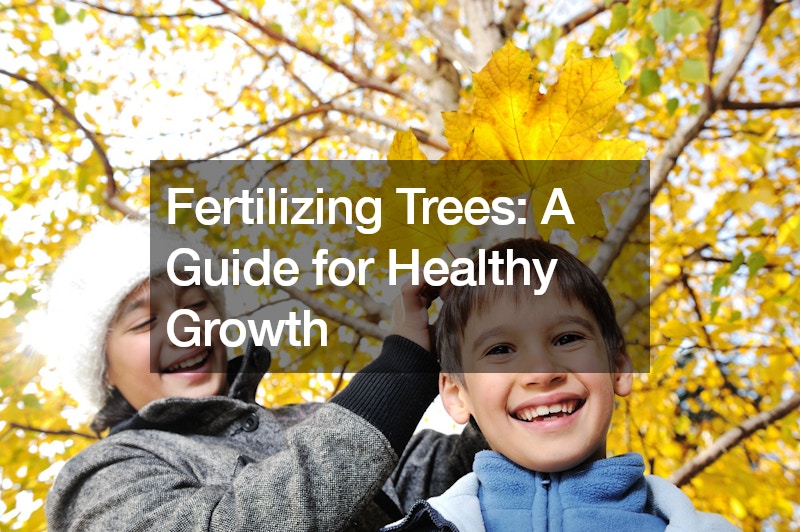Trees, with their majestic beauty and environmental benefits, are an essential part of any landscape. To ensure their vitality and longevity, proper care and maintenance, including fertilization, are crucial. Fertilizing trees not only promotes healthy growth but also enhances their ability to withstand environmental stressors. In this comprehensive guide, we’ll delve into the importance of fertilizing trees and provide practical tips for achieving optimal results.
Why Fertilize Trees?
Fertilizing trees is akin to providing them with essential nutrients for sustained growth and vitality. Just like any living organism, trees require nutrients to thrive.
While trees can often extract nutrients from the soil, factors such as soil depletion, environmental stress, and competition from other plants can hinder their ability to access adequate nutrition. This is where fertilization plays a vital role.
By supplementing the soil with nutrients, fertilization provides trees with the essential elements needed for robust growth, including nitrogen, phosphorus, potassium, and micronutrients like iron and zinc. These nutrients contribute to healthy foliage, strong root development, and overall resilience against pests and diseases.
When to Fertilize Trees
Fertilizing trees is typically done in spring and fall, coinciding with the active growing seasons. Spring fertilization supports new growth and flowering, while fall fertilization prepares trees for the dormant winter months. However, the timing may vary depending on factors such as tree species, soil conditions, and climate.
It’s important to assess the health of the trees before fertilizing. Young trees and those exhibiting signs of nutrient deficiency or stress are prime candidates for fertilization. Established, mature trees that are healthy and thriving may require less frequent fertilization, if any. Consulting with a tree service or arborist can help determine the appropriate fertilization schedule for your trees.
Choosing the Right Fertilizer
Selecting the right fertilizer is crucial for achieving optimal results. Organic fertilizers, such as slow-release formulations, are often preferred for their gradual nutrient release and soil-building properties. These fertilizers provide a steady supply of nutrients to the trees over time, promoting sustained growth and minimizing the risk of nutrient runoff.
When choosing a fertilizer, look for products specifically formulated for trees and shrubs, with balanced nutrient ratios tailored to their needs. Avoid using fertilizers designed for lawns or other plants, as they may contain excessive amounts of nitrogen, which can harm trees.
Applying Fertilizer Properly
Proper application is key to maximizing the benefits of fertilization while minimizing potential risks. Before applying fertilizer, measure the diameter of the tree trunk four feet above the ground to determine the amount needed. This ensures that the tree receives the appropriate dosage of nutrients.
To apply the fertilizer, focus on distributing it near the active root zone, typically located within the drip line of the tree. The drip line is the outermost reach of the tree’s branches, where rainwater drips off like an umbrella. Creating holes or trenches along the drip line allows the fertilizer to penetrate the soil and reach the roots effectively.
There are several methods for applying fertilizer, including using an auger to make holes or trenches, or lifting sod and placing the fertilizer underneath. Whichever method you choose, ensure that the fertilizer is evenly distributed and watered in thoroughly after application. This helps the nutrients penetrate the soil and become readily available to the tree’s roots.
Monitoring and Maintenance
After fertilizing, monitor the trees for signs of improvement, such as vibrant foliage and vigorous growth. Regular inspection can help identify any potential issues early on, allowing for prompt intervention if needed. Additionally, maintaining proper soil moisture and drainage is essential for nutrient uptake and overall tree health.
Benefits of Fertilizing Trees
Beyond promoting healthy growth, fertilizing trees offers a range of benefits for both the trees and the surrounding environment. Healthy trees enhance property value, provide shade and habitat for wildlife, and contribute to air and water quality. By investing in tree care, homeowners can enjoy a more vibrant and sustainable landscape while supporting the overall health of their community.
Common Mistakes to Avoid
While fertilizing trees is beneficial, there are some common mistakes to avoid to ensure success. Over-fertilization can lead to nutrient imbalances and environmental pollution, while under-fertilization may result in stunted growth and poor health. It’s essential to follow recommended dosage rates and application guidelines to prevent these issues.
Additionally, using the wrong type of fertilizer or applying it at the wrong time can have adverse effects on tree health. Always read and follow the instructions provided by the manufacturer and consider seeking advice from a tree service or arborist if you’re unsure.
Conclusion
In conclusion, fertilizing trees is a vital aspect of tree care that promotes healthy growth and resilience. By providing trees with the essential nutrients they need, fertilization enhances their ability to thrive in various environmental conditions. Remember to assess the health of your trees, choose the right fertilizer, apply it properly, and monitor their progress regularly. With proper care and maintenance, your trees will flourish for years to come.
.




